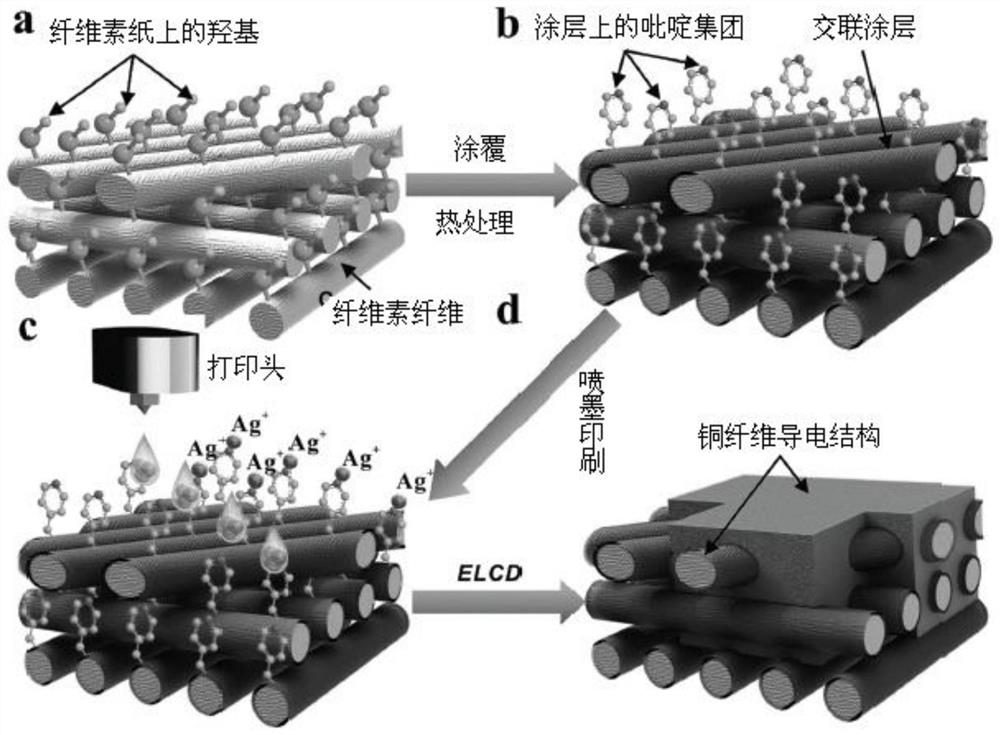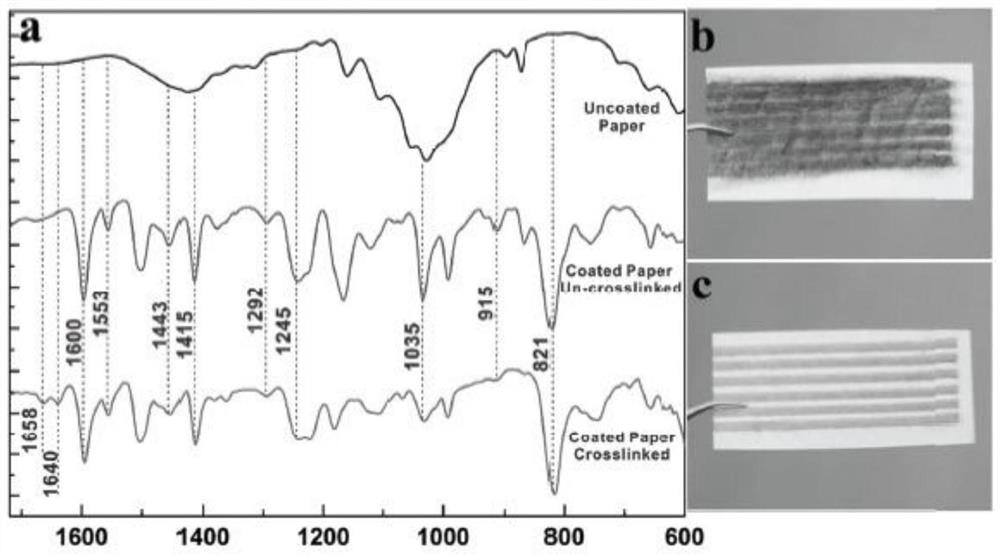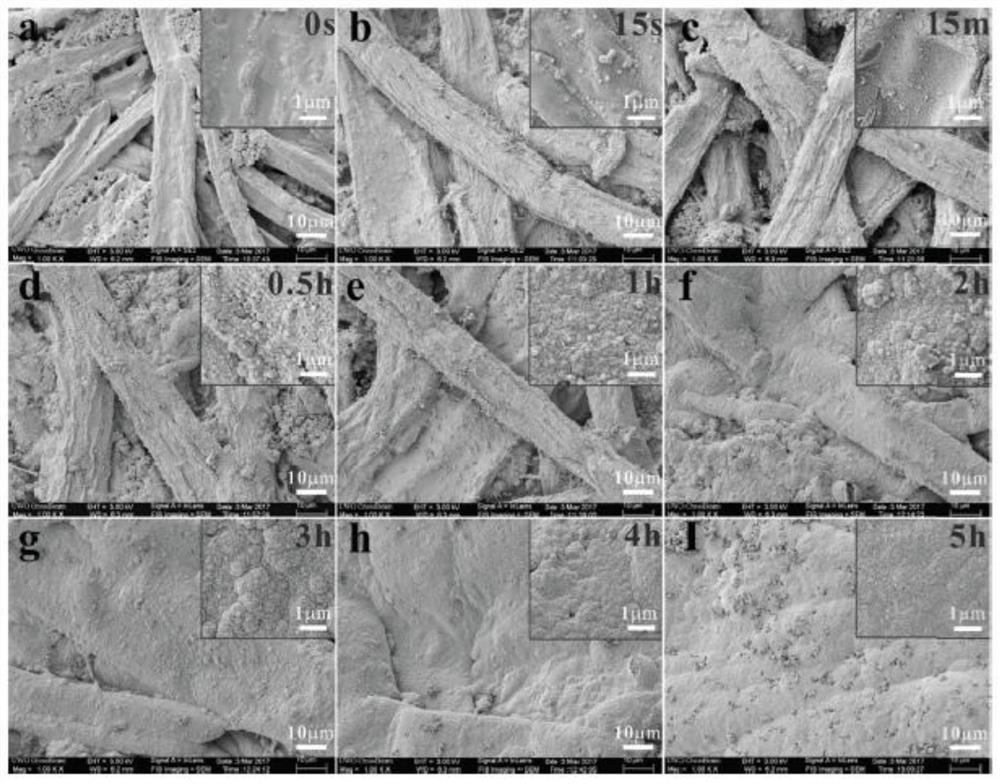Method for fabricating highly conductive copper-fiber mixtures on porous substrates
A porous substrate, highly conductive technology, applied in the fields of dielectric properties, porous dielectric, conductive pattern formation, etc., can solve the problem of impossible to manufacture multi-layer circuits at one time, limit the application of ELD, etc., achieve strong and reliable bonding force, improve bending Durability, Delamination Prevention Effect
- Summary
- Abstract
- Description
- Claims
- Application Information
AI Technical Summary
Problems solved by technology
Method used
Image
Examples
Embodiment 1
[0035] Example 1: Surface modification of porous substrates
[0036] Untreated cellulose paper was dipped directly into the coating solution for 5 seconds. The paper was then slowly drawn out of the solution and allowed to air dry for 5 minutes at room temperature. Finally, the coated paper was placed in an oven at 135 °C for 20 minutes for the in situ cross-linking reaction of SU-8 and P4VP molecules.
Embodiment 2
[0037] Example 2: Fabrication of High Conductivity Circuit
[0038] Glycerol-water solution was prepared by mixing anhydrous glycerol and distilled water at a volume ratio of 3:2. Silver nitrate was then added followed by mixing in a VWR mixer for 4 minutes to form a 60 mg / mL silver salt solution. The prepared ink was degassed in a vacuum chamber at 2 psi for 1 hour to remove dissolved gases and air bubbles. The viscosity and surface tension of the final ink were 11.5 cp and 53.5 mN / m, respectively. These values are within the optimum range for the Dimatix DMP-2800 printer. Use a 0.2 μm nylon syringe filter to remove unwanted particles from the ink. Ink is loaded into a cartridge mounted on a 10pL piezoelectric drop-of-drop (DOD) inkjet printhead. The printing parameters are set as: drop distance, 30 μm; meniscus vacuum degree, 3.5 inches H 2 O column; print head temperature, 25°C; print head angle, 4.2°; jetting voltage, 25.1V. Printing was performed at room temperatu...
Embodiment 3
[0039] Embodiment 3: the making of non-drilling multilayer circuit
[0040] As in Example 2, the ink was loaded into a cartridge mounted on a 10 pL piezoelectric drop-of-drop (DOD) inkjet printhead. The printing parameters are set as: drop distance, 30 μm for conventional circuit, 5 μm for through hole; vacuum degree of meniscus, 3.5 inches H 2 O column; print head temperature, 25°C; print head angle, 4.2°; jetting voltage, 25.1V. Smaller droplet spacing can cause an increase in ink volume per unit area, so ink will penetrate more into the porous substrate rather than remain on the surface. By controlling the volume of ink per unit area, the depth of penetration can be finely tuned in the treated porous substrate so that the substrate can be metallized at the desired depth. For the interconnection between layers, we use a small droplet pitch (4 ·5H 2 O (14g / L), NaOH (12g / L), potassium sodium tartrate (16g / L), EDTA·2Na (20g / L), HCHO (26mL / L), 2,2'-bipyridine (20mg / L ) and p...
PUM
| Property | Measurement | Unit |
|---|---|---|
| thickness | aaaaa | aaaaa |
| frequency | aaaaa | aaaaa |
Abstract
Description
Claims
Application Information
 Login to view more
Login to view more - R&D Engineer
- R&D Manager
- IP Professional
- Industry Leading Data Capabilities
- Powerful AI technology
- Patent DNA Extraction
Browse by: Latest US Patents, China's latest patents, Technical Efficacy Thesaurus, Application Domain, Technology Topic.
© 2024 PatSnap. All rights reserved.Legal|Privacy policy|Modern Slavery Act Transparency Statement|Sitemap



